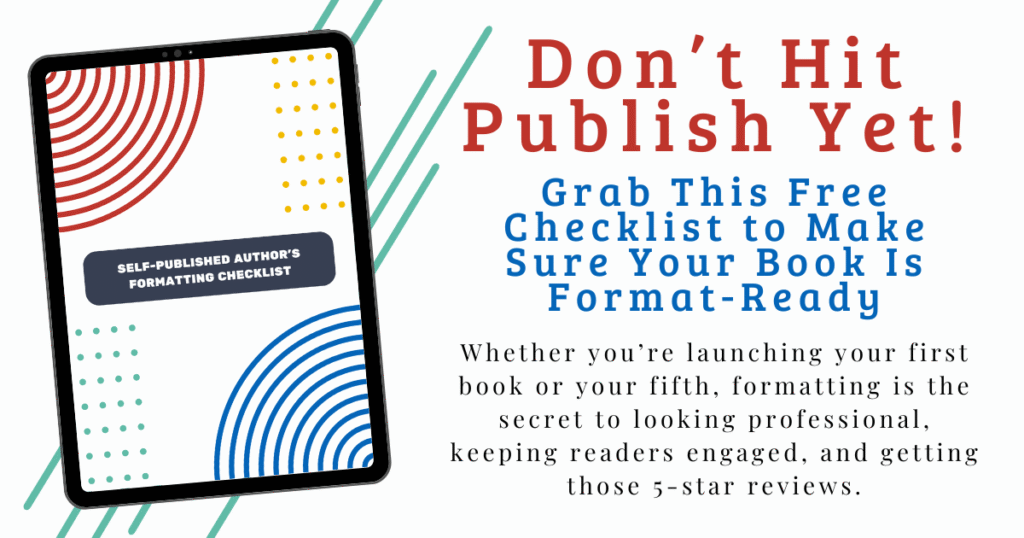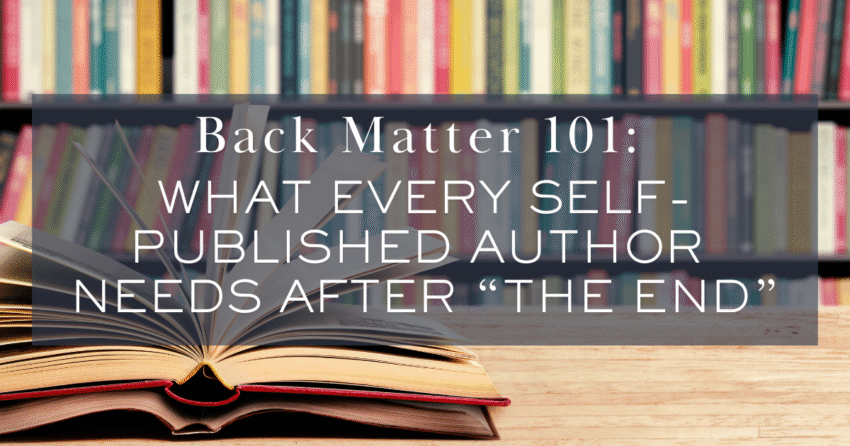So, your story’s over. You typed “The End,” closed your laptop with a flourish, and maybe even did a happy dance in your kitchen. But hold up — your book isn’t quite done yet.
There’s a little section often overlooked but packed with potential: the back matter. And if you’re an indie author, this part of your book is more than just a place to say thanks—it’s prime real estate for building reader relationships, teasing future books, and even getting more sales.
The back matter is everything that comes after your story ends. Unlike front matter (which includes required bits like your copyright notice), the back matter is optional—but oh-so-powerful. Think of it like the dessert at the end of a good meal. You could technically skip it, but… why would you want to?
Acknowledgments: Your Mini Oscar Moment
Let’s start with the feel-good stuff: acknowledgments.
This is where you shout out your beta readers, critique partners, editor, cover designer, and of course, your family and friends who cheered you on through every word. Think of it as your own little Oscar acceptance speech—no fancy gown required.
Tip: Keep it warm and personal. Readers love seeing the human behind the pages.
About the Author: Introduce Yourself (Again)
If you didn’t include your author bio in the front matter, this is the place to do it. And even if you did, it’s totally fine to include a slightly more relaxed or personalized version in the back.
Include a current headshot and a short or medium-length bio. You can keep it consistent across all your books or tailor it a bit to match the tone or themes of the one they just finished.
For example, in my novel Etta and Gina, which is set in my hometown of St. Louis, I mentioned how writing the book helped me reconnect with the foods and feelings of my childhood. That little personal touch goes a long way in making readers feel like they know you.
Ask for the Review (Nicely!)
Readers who make it to the end of your book? They like you. So don’t be shy—ask for a review!
You can phrase it warmly, like:
“If you enjoyed this book, I’d love it if you left a quick review—it helps other readers discover it!”
Include a universal review link or use smart links that send them back to the store where they purchased the book (Amazon, Apple Books, Kobo, etc.). Some professional formatting tools can even do that automagically.
Invite Them to Your Newsletter
Your back matter is an ideal place to invite readers to join your email newsletter. Why? Because they’re already invested in your story and your voice. Strike while the bookish iron is hot!
Let them know:
- What they’ll get (freebie, bonus chapters, character art, etc.)
- How often you email (weekly, monthly, just when there’s news)
- Why they’ll love it
Bonus tip: Include a visual—like a mini banner or mockup of your freebie—to grab attention.

Sneak Peek: Tease the Next Book in the Series
Got a sequel brewing? A series planned? A novella connected to the main character’s dog’s cousin? Now’s the time to tease it.
If you’ve already drafted Book Two, share the first chapter or even just a short teaser. Readers love feeling like insiders. You can even say:
“You’re one of the first to read this sneak peek!”
Then—this is important—follow it with a newsletter signup or a purchase link so they can stay in the loop or buy the next book immediately.
If your series is complete (first of all—go you!), go back and add the first chapter of the next book in each one. Yes, it’s a little extra work, but it keeps your readers binging your stories like it’s Netflix.
List of Other Books by You
This is especially helpful if you’ve got multiple books out. Don’t assume readers know about all of them!
Create a clean, organized “Also by” section that:
- Groups books by series
- Lists standalone titles
- Includes purchase links (again, universal or store-specific)
This helps readers know where to go next and builds trust in your author brand.

Formatting Tips for a Polished Back Matter
Now, let’s talk layout. The way your back matter looks is just as important as what’s in it—especially for print.
Here are a few things to watch out for:
- Headshot Sizing: Make sure your photo isn’t so large it bumps your bio onto a second page—unless that’s intentional.
- Print Page Balance: In paperback formatting, odd pages are on the right. If your bio starts on the right and ends on the back (left), you might not like how that looks when the book is open.
- Spacing and Style: Keep fonts and styling consistent with the rest of your book. You want your back matter to look just as professional as your cover and interior.
Pro tip: If you’re using Vellum, Atticus, or another pro-level formatting tool, use the preview option to double-check layout before uploading your files.
TL;DR: What to Include in the Back Matter of Your Book
Here’s a quick checklist of back matter ideas:
✅ Acknowledgments
✅ Author bio + photo
✅ Request for reviews (with a link!)
✅ Newsletter sign-up info
✅ Teaser or chapter from your next book
✅ “Also by” list of your other titles
✅ Social media or website links
Remember: You don’t have to include everything. Pick the pieces that serve your goals and your reader’s journey. And if you’re unsure, start small and build as you go.
Want More Help with Formatting?
Feeling overwhelmed? Don’t worry—I’ve got your back! 🎉
Download my free Indie Author Formatting Checklist where I walk you through both front and back matter (plus everything in between). It’s beginner-friendly, easy to follow, and available right here.

And if you missed my video on front matter, that’s a must-watch too—check it out HERE or on my YouTube channel.
The end of your story doesn’t have to be the end of the reader’s journey with you. By using your back matter strategically, you can:
- Strengthen your author-reader relationship
- Sell more books
- Grow your newsletter
- Build buzz for future releases
All while giving your book a polished, professional finish.
So next time you’re formatting your manuscript or working with a formatter (hi again 👋), give the back matter a little extra love. Your readers—and future self—will thank you.
Until next time, happy writing and keep being the indie author rock star you are!
💌 Got questions about formatting, front matter, or back matter? Drop them in the comments or send me a DM. I’d love to help!
